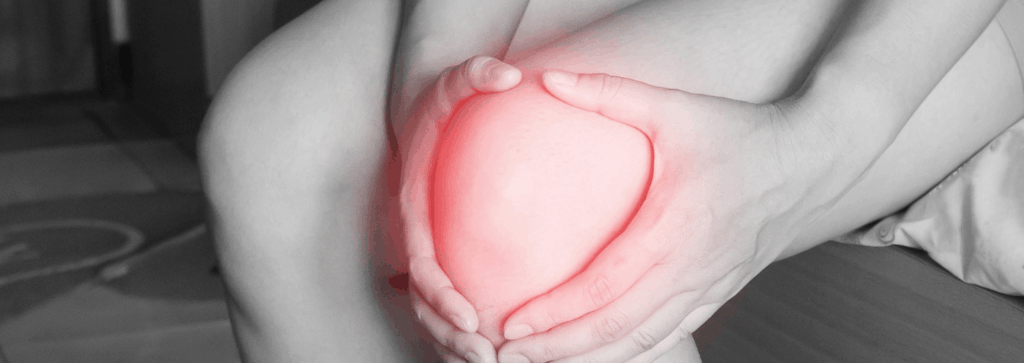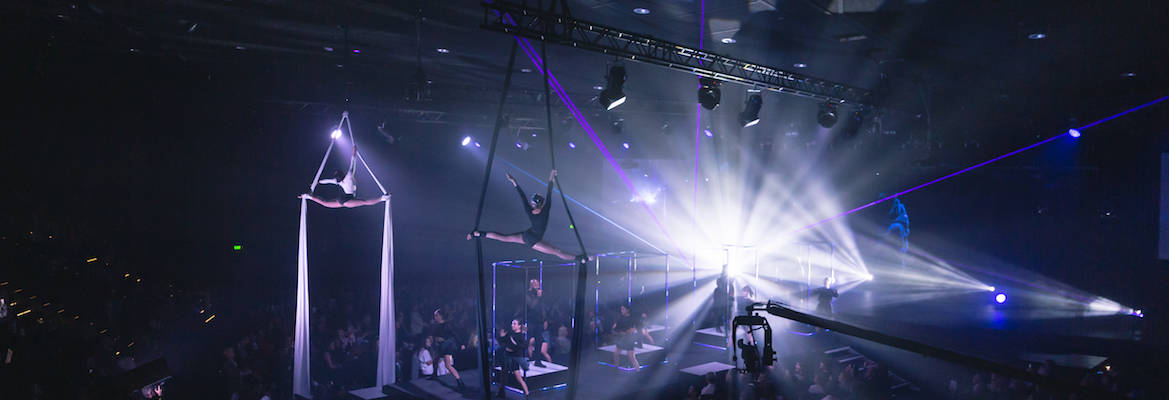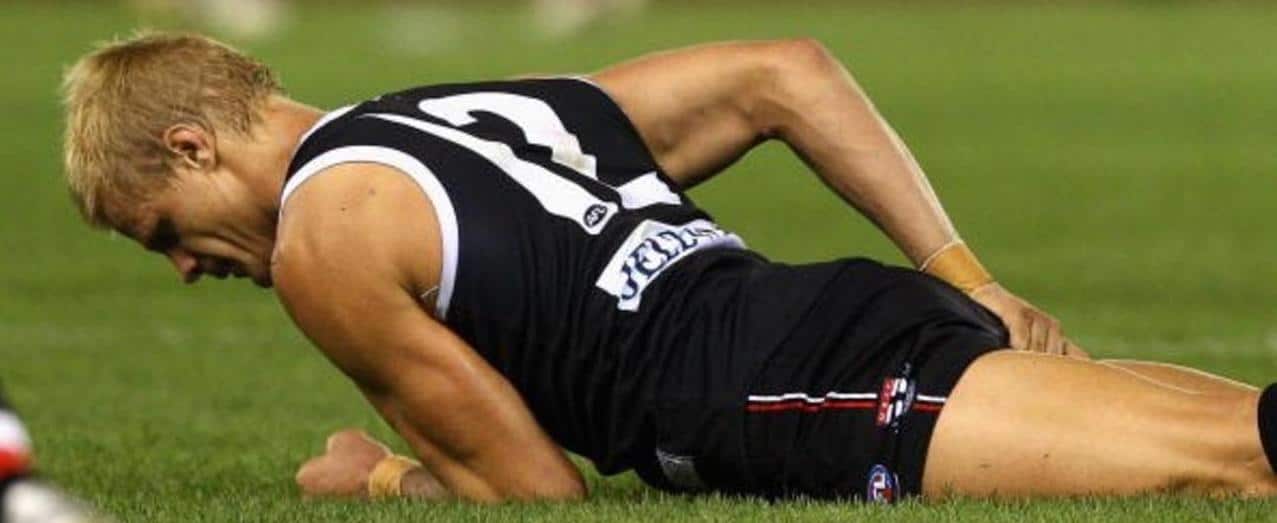Lachlan Sutherland has brought with him his passion and knowledge for soccer, and enthusiasm for helping kids and adults with their soccer injuries.
He gives us an interesting breakdown of the most common soccer injuries and how they happen.
The Most Important Thing About Soccer Injuries
To put it all into context, here is some interesting information from a systematic review that was published in 2016*.
Soccer players with a previous injury had a 4x to 7x higher chance of re-injury.
The biggest risk factors for injury were:
- Previous injury
- Inadequate rehabilitation
If you have had an injury, you can’t go back in time and un-injure yourself. But what you do have control over is the rehabilitation process.
If you take nothing else away from this, this is the biggest message.
If you have had a soccer injury, it is imperative that you complete your rehab right up until you are 100%.
Not just until you are painfree.
You need to achieve full strength, endurance, agility, range of movement.
And you also need to have passed through the different stages of rehab successfully.
The 10 Most Common Soccer Injuries
These are listed in order of frequency according to the source*.
1. Hamstring strain/tear
- The function of the hamstrings is critical in running. They decelerate the leg when getting to the end of the stride. They then pull the leg back for the next stride
- In soccer, hamstrings are put under high loads with sprinting
- They are active when passing over distances and shooting for goal when more power is needed
- Injuries are particularly common when players are quickly accelerating into a sprint
2. Groin strain/tear
- The function of the groin/adductor muscles is to pull the leg across the body
- They assist the hamstrings, quadriceps and gluteals to run and change direction
- As soccer involves constant changes of direction, the groin is placed under increased load compared to many other sports
- The groin is put under increased load with passes over a shorter distance
- This is because short passes require the kick to be from the inside arch of the foot
- With the leg turned out, the groin has to cope with more load than the quadriceps
3. Ankle sprain
- The most common way to sprain an ankle is by rolling onto the outside of the foot.
- The ankle ligaments most likely to be sprained are the Anterior Talo-Fibular Ligament (ATFL) and the Calcaneofibular Ligament (CFL) on the outside of the ankle
- Constant change of direction means that soccer players are more likely to sprain these ligaments compared to other sports
- If the ground has divots, the player can momentarily lose balance and run the risk of this kind of injury
- Ankle sprains can occur during a tackle when two players making contact with the ball at the same time, or if one player is hit by another player forcing the ankle into inversion
4. Calf strain/tear
- The most important function of the calf when playing soccer is to provide power to push off and run.
- As soccer players for the most part are constantly moving, the calves are constantly required to work.
- The calf is most commonly injured when a player is pushing off into a sprint from a standing start. This requires the most amount of force from the calf.
5. Quadriceps strain/tear
- The quadriceps muscle group is the least commonly injured muscle group of the thigh
- It is less commonly injured compared to the hamstrings and the groin
- The quadriceps are required to straighten the knee to provide power for kicking
- They assist the hip flexors to drive the leg when running (this is why they are nicknamed ‘the drivers’)
- Injuries will most commonly occur when a player is sprinting or when they are kicking with power
- When a player is kicking with power, they will kick with a pointed toe and and their toes will point towards the direction of the kick, biasing the effort towards the quadriceps
Looking for some free advice on a soccer injury?
You can speak with Lachlan with no strings attached!
Just call 8356 1000 or book online for a FREE Physio Phone Call
6. Knee Collateral Ligament sprain/tear
- There are two collateral ligaments of the knee, the medial collateral ligament and the lateral collateral ligament.
- These ligaments limit sideways movement of the knee which can cause increased damage to other structures.
- These ligaments are usually injured when a player gets caught up in a tackle or lands awkwardly after jumping, resulting in the knee being forced to bend inward or outward.
7. Anterior Cruciate Ligament (ACL) tear
- There are two cruciate ligaments of the knee, the Anterior Cruciate Ligament (ACL) and the Posterior Cruciate Ligament (PCL).
- These ligaments help assist the control the position of the shin (tibia) in relation to the thigh (femur)
- The Anterior Cruciate Ligament is more commonly injured due to its location in the knee and the forces that cause it to rupture are more common
- A full rupture of an ACL results in one of the longest recovery periods of any injury in any sport
- They commonly result in recovery periods of at least 10-12 months
- The rate of ACL injuries in children and adolescents is on the rise
- Warm-up programs such as the FIFA 11+ have been shown to reduce the frequency of ACL ruptures in soccer players
The 3 most common ways the Anterior Cruciate Ligament (ACL) is injured:
- from being caught awkwardly in a tackle
- landing awkwardly after jumping with the knee going into hyperextension and
- if the player tries to change direction with the foot being caught
How Do I Help My Child Stay Injury-Free?
This guide helps to answer some of the most common questions that parents have about children and sport, and how to help them to best avoid injury.
Click here to download your free copy!
8. Shin splints
- Shin splints is the aggravation of the muscles and the bone along the inner part of the shin
- This occurs most frequently in the pre-season and early season for soccer players
- This is due to the change of activity between sports or getting back into training after reduced activity during the off season.
- If a base level of running isn’t maintained during the off season, shin splints can easily occur
- Another factor is if the player isn’t wearing supportive shoes during fitness training or supportive boots during soccer training
9. Achilles Tendinopathy
- Achilles tendinopathy is a painful irritation of the Achilles tendon, which usually occurs at the mid-point of the Achilles tendon (midportion) or closer to the attachment on to the heel bone (insertional)
- Like shin splints, Achilles tendinopathy commonly occurs in the pre-season or early season
- It is more likely if a base level of running isn’t kept up during the off season.
10. Plantar Fasciitis
- The plantar fascia is strong and fibrous tissue on the bottom of the foot that assists the calf with push off for walking and running
- Plantar fasciitis is aggravation of the plantar fascia, most commonly at the attachment onto the calcaneum (heel bone)
- This most commonly occurs during pre-season and early season and more commonly occurs if a base level of running isn’t kept up during the off season.
- As with shin splints, this can also become a problem when the proper footwear hasn’t been worn.
Soccer Injuries – A Summary
- You might have noticed that there are injuries that are related to load and tissues not coping with an increase in activity (shin splints, plantar fasciitis, Achilles tendinopathy)
- Some of the injuries seen in soccer are the result of external forces, external factors and bad luck. Examples of these are knee or ankle injuries that happen during tackling, or sprains from divots in the ground
- Many of the injuries are related to factors that you can protect against and control in some way. Training load, footwear, adequate and appropriate warmup
- There is good evidence that the FIFA 11+ is effective in reducing the rate of ACL injury
- This modifies ACL injury into something you can protect against. The rate of many of these other injuries can also be reduced by following these guidelines
- Remember, the biggest factor in injury is whether you have been injured before.
While you can’t erase a past injury, you do have ultimate control over the effectiveness of your rehabilitation – the other biggest predictor of injury.
*Source:
Analysis of Injury Incidences in Male Professional Adult and Elite Youth Soccer Players: A Systematic Review https://www.ncbi.nlm.nih.gov/pmc/articles/PMC5013706/
To learn more about Lachlan, here is a link to his bio.
If you would like to speak with Lachlan about any injuries relating to soccer, you can organise an appointment by calling 8356 1000 or click on the button to book online.














